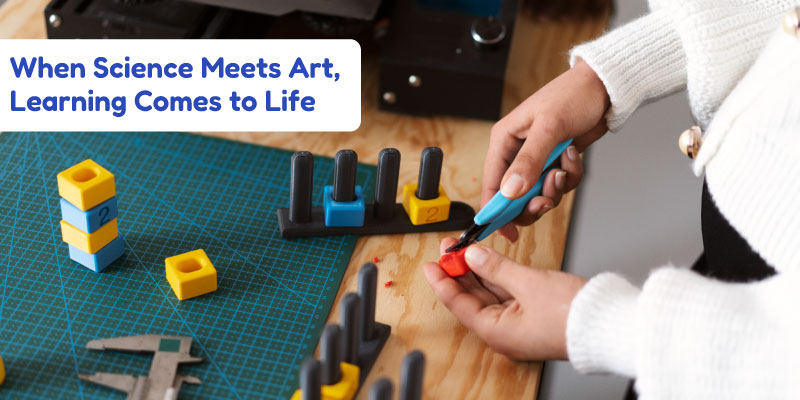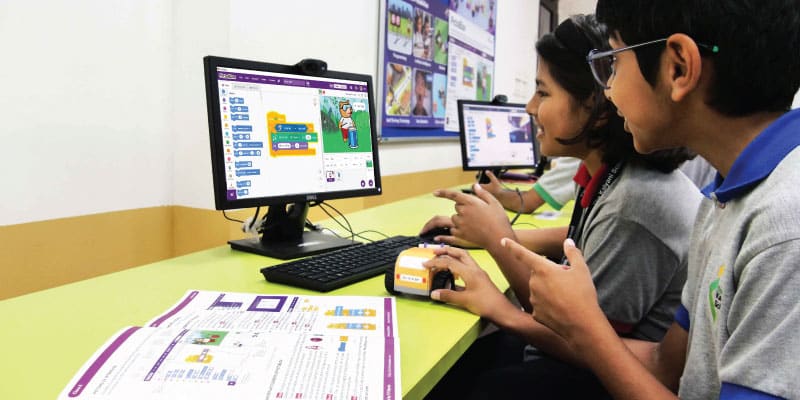Education is the key to strong societal development and making a better tomorrow. STEM education is the big thing in making education the revolution that it is. The spirit of this technique lies in learning by doing and hence we must not forget that when we teach and impart knowledge, we ourselves are learning. What better way than to learn by one’s own mistake?
This blog shall be a simple do-it-yourself guide to make STEM better, on all platforms.
Before we stress on what changes can make STEM fields and STEM education better than what it has been, it becomes important to see the current scenario. According to one report, the employment predictions about STEM fields are striking and need to be taken into consideration when building a learner and a teacher. The current demand for STEM-capable workers surpasses the supply of applicants who have trained for those careers. Some 16 of the 20 occupations with the largest projected growth in the next decade are STEM-related. Only four of the STEM-related occupations with the largest projected growth require an advanced degree. The rest also require specialized training, but typically an associate’s degree or bachelor’s degree is sufficient.
It is quite clear that STEM stands at the verge of a future where employment will be all about being interdisciplinary. With all these in mind, let us see how STEM education can be enhanced.
Working on Ground Zero – The Teaching and Learning Environment
Teaching is the biggest focus of STEM. Efficient teaching strategies are crucial to make learning a more engaging exercise. Adopting new techniques and dynamically changing them with students’ feedback makes the entire process of learning more and more lively and efficient. What we see today is not exactly a good enough implementation of a proper educational model. Classes need to be more and more interesting. The student engagement in a class and, in effect, a subject comes from the right kind of educational practices. STEM has a lot of ideas to offer in this regard. A blog post by SuccessfulSTEMEducation.org enlists quite strong ways of teaching that can make a class quite interesting. Making engagements better than what they are in the present state doesn’t only make classes interesting, but also ignites a spark of insatiable curiosity. One such example is asking teachers to teach somewhat complex scientific phenomenon using everyday objects. The blog enlists an example of how a teacher can explain the phenomenon of Molecular Motion using a filled aquarium and coloured glasses. This not only makes it fun for the students but also forces the teachers to be creative with every topic they teach. This ends up in a strong feedback loop making both the stakeholders in the process better with each iteration. Successful teachers provide frequent opportunities for students to engage in logical arguments as they learn to build and refine explanations for their observations, allowing students to design and conduct empirical investigations, connect the investigations to core knowledge, and work from a curriculum linked to meaningful problems.
Apart from pedagogy, one must also consider the environment in which the student nourishes her mind with the beauty of STEM. We can look at it like this. Solving problems with engagement and then realising the right kind of theory they just learnt happen in real life is crucial to make a better intuitive conceptual approach. Hence, pupils should be given the right kind of environment, both at home and school (or University and College) where they can flourish as problem solvers. Team engagements, collaborative projects and other projects end up giving students a feel of solving problems with teammates This initiates the process of learning how to lead and how to be more productive in teamwork. As it shall be discussed later, having people from various ethnicities and diverse backgrounds leads students to learn how to adapt to various cultural differences and learn how to tackle problems that arise.
As intuitively obvious as it may sound, technology is as important in this age as much as papers are. Students need to inculcate technological enhancements in their learnings and apply them in their curricula. Teachers need to cope with this role of technology and make sure that it isn’t underrated. Many conventional minded teachers, and parents, tend to ignore this and make it difficult for the ward to understand how recent technology can help them in being better people in the upcoming society. Educational Technology (Ed-Tech) hence becomes yet another milestone in this path to improving STEM learning. Ed-Tech can seamlessly blend in the learning of children and make it a fairly balanced environment for them to learn more via technology.
The Stakeholders – Teachers, Parents, and Students
Enough has already been said about how students and teacher interactions are quintessential for a smooth STEM learning curve. However, learning must not stop at academic venues. Students, especially elementary students, need to remain involved in learning at home too. This directly brings in the role of a parent in STEM learning and how they can involve themselves better in the same. This role of a parent, as discussed by our own publication, has a strong impact on the child. The child and parent dynamic is a two-way relationship where the child develops a lot via his parents’ reactions to the world from a very young age. Research suggests that regular parent-teacher communication is crucial to make sure that the student is on the right track of being a better problem solver. This is, in effect, there at a superficial level in the global education scenario, but communication is not strong enough to boost STEM learning. Apart from communication, parents also need to ensure that their wards are lively and curious about the problems of the world. Social interactions tend to boost learning methods and must be a child’s routine.
In 2017, the National Academy of Sciences published a paper investigating parental involvement in student motivation to study STEM disciplines and later pursue a STEM career. In the study, a group of parents were given two brochures and access to a website that discussed the importance of STEM education. The parents also learned strategies for talking about these materials with their children.
The researchers found that students whose parents read the brochures and website and discussed the material with them were likely to be motivated to take one more semester of a STEM course than students whose parents did not receive access to the brochures and website. The researchers also found that math and science ACT scores of students whose parents discussed the brochures and website with them were approximately 12 points higher.
We have most of the equation balanced. Students, teachers and parents have indeed established parameters that need to be improved. But what of the social scenario?
STEM and The Society
A society’s human resources are now easily judged by the number of employable people that its higher education generates. STEM learning is an all-encompassing field that makes it easy for us analyse societal interactions in the education scenario of the modern world. The role of women in STEM is indeed something we need to look forward to. Empowering women is one strong step towards making a better society. Modern developed societies like the USA although see a high rate of STEM graduates, the students it generates are not as diverse as they can be. In other words, the ethnic and gender gap between students has remained low. STEM education is an all-inclusive strategy on a national level. According to a post by Washington Post, America’s public schools suspended significantly fewer students in 2014 than they did in 2012, according to new federal data, but stark racial gaps persisted — not only in the way students were disciplined but also in their access to experienced teachers and advanced math and science courses.
This is an area that must be worked upon to build a better world. Students who do not have enough cultural exposure tend to not understand problems beyond their own cultural stereotypes. This leads to biased growth and hence a slower development of a society which is all not very inclusive of various ethnicities and genders.
In A Nutshell
STEM learning and Education is a revolution in its own right. A revolution where people are learning how to learn and make a better society. Better and engaging teaching, strong collaborative problem solving, technological involvement and parental support make up for a strong foundation for STEM. Apart from that, an all-inclusive approach is necessary to make a better community of problem solvers. We are all working to make a better education system and this our own DIY take on how to make STEM better.












